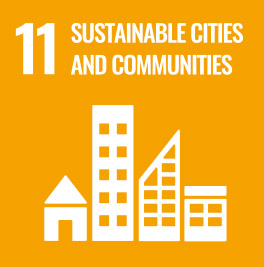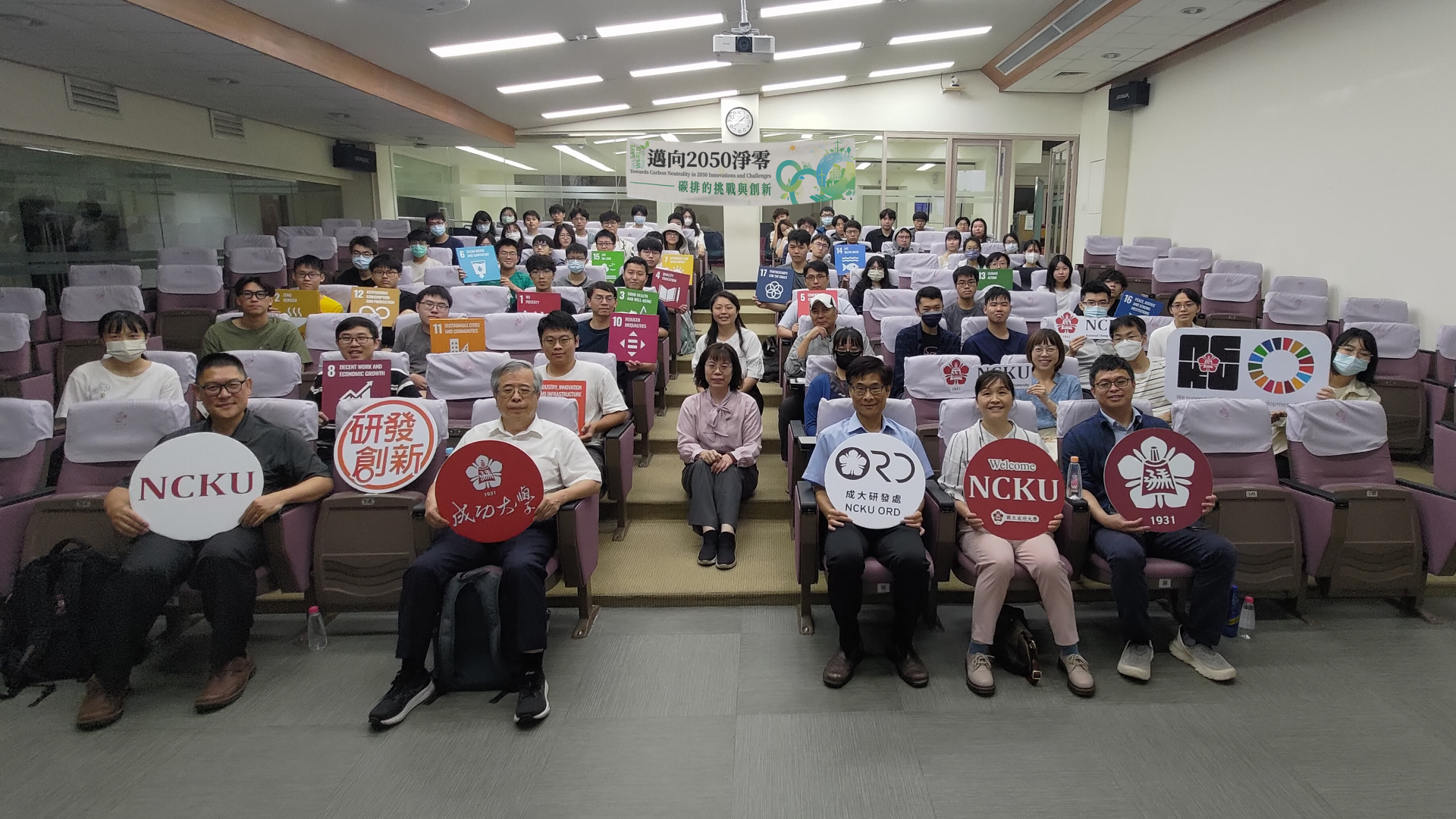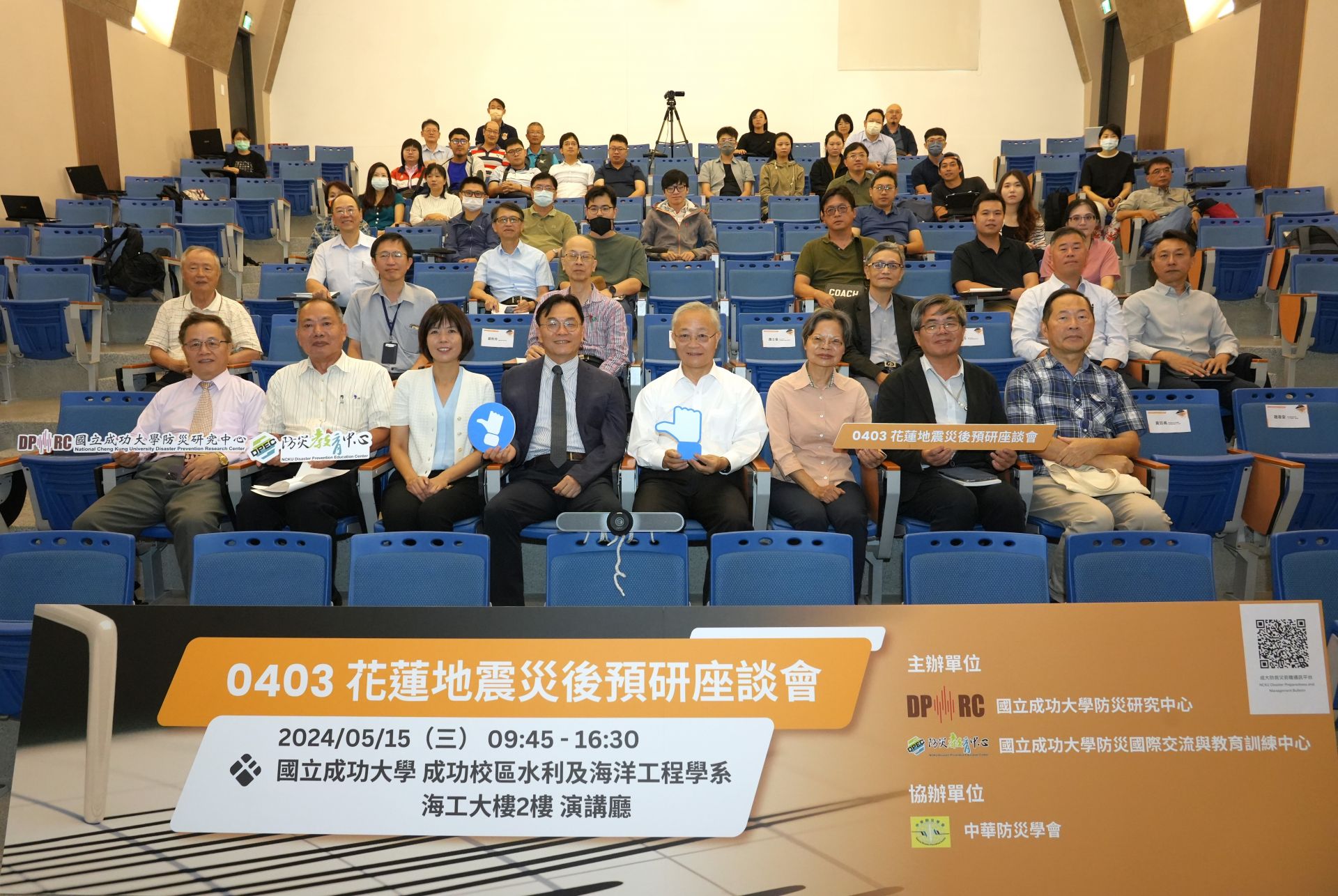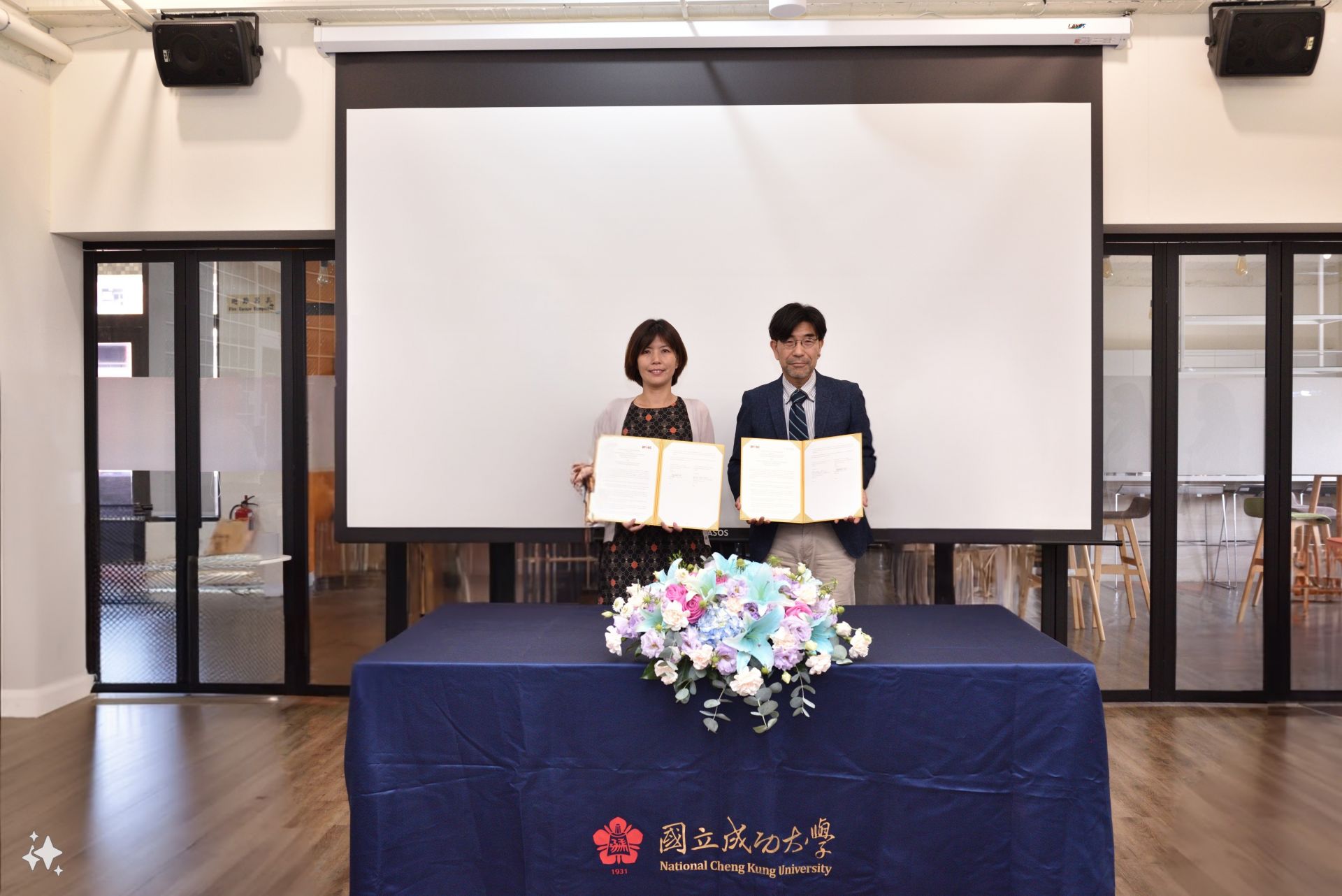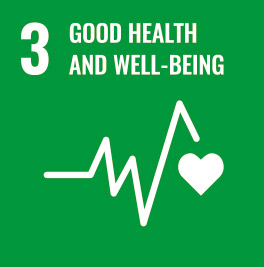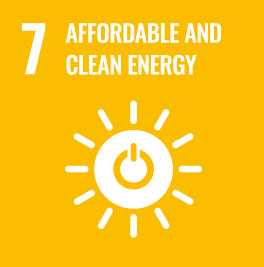The "Veins of Fallen Leaves," a bridge constructed by the NCKU Architecture Department using a robotic arm, made its debut at the beginning of the 112th academic year. Stretching 7 meters in a graceful arc across the ecological pond of the Architecture Department, it has become a unique and elegant campus landmark. This marks the third robotic arm wood structure project from the NCKU Digital Fabrication Workshop (RAC-Coon), following "Wave Eaves" in 2021 and "Woven Shadows" in 2022.
Guided by Professors Yang-Ting Shen and Chia-Ching Yen, the design and construction team of six senior students—Huai-An Dai, Chen-Chia Liao, Chung-Yu Pan, Yung-Hsing Tsao, Huai-Yun Hung, and Pei-En Ho—worked alongside three master's students, and two structural consultant teams led by Professors Lian-Kai Huang and Yu-Min Kao. The theme of "Low Carbon Crossing" was adopted for the creation of a wooden bridge spanning the Architecture Department's ecological pond.
Inspired by the curved shape and natural vein patterns of fallen leaves, the design team utilized parametric design algorithms to transform these organic shapes into a double parabolic form and a polygonal force-transmitting structure. This resulted in a technology-driven artwork exhibiting a harmonious blend of nature and science. The design process prioritized the preservation of aquatic plants in the pond, leading the team to choose an arched design. Through precise parameter control, they achieved a 7-meter arch that balances aesthetics and structural integrity.
In terms of materials and technology, the team aimed for a low-carbon construction system by selecting nearly carbon-neutral Southern Pine wood. To minimize the use of large-sized special logs for the long span, the team employed a discrete design method, creating an internal segmentation of the bridge's overall structure. This division resulted in a network structure composed of hexagonal and pentagonal geometric units, with each unit having a maximum edge length of 90 cm, significantly reducing material specifications and transportation costs.
Despite these considerations, maintaining the accurate angles between each unit and ensuring the precision of each short component were crucial for achieving the overall double parabolic shape. The "Veins of Fallen Leaves" design team employed a digital twin model to simulate the three-dimensional joining relationships of each component. Using a robotic arm, each wooden component was custom-machined to the correct angle, allowing the accurate assembly of geometric units. One of the guiding professors, Chia-Ching Yen, highlighted that this project broke ground by directly exporting cutting data from the design model during robotic arm cutting operations, reducing human intervention and significantly shortening processing time.
In terms of teaching, the project was executed by the Digital Fabrication Workshop (RAC-Coon) of the NCKU College of Planning and Design under the guidance of the "Robot-Assisted Tectonics" (RAT) teaching group, led by Professor Yang-Ting Shen. The RAT teaching group aims to introduce and apply robotic arm techniques to undergraduate professional courses. Professor Shen emphasized the core philosophy of RAT as "Technology-empowered Tectonics," bringing cutting-edge robotic arm techniques into core undergraduate design courses. This integration allows technology to become rooted in university education, creating interdisciplinary talents with societal and industrial impact.
The "Veins of Fallen Leaves" opened on September 12, accompanied by a forum on robotic arm wood construction. The event coincided with the third anniversary of the establishment of the Digital Fabrication Workshop (RAC-Coon), adding significance to the occasion. Former President Huey-Jen Su, speaking at the opening ceremony, urged that architecture should coexist with the land, and low-carbon construction and local materials are viable and necessary development paths. Dean Chien-Hsu Chen of the College of Planning and Design encouraged students to make good use of and cherish the learning resources provided by NCKU, creating greater societal impact. Planning Director Cheng-Luen Hsueh announced that the Architecture Department will host regular forums each week in the future, fostering the exchange of cutting-edge knowledge and technology among faculty and students.
Guided by Professors Yang-Ting Shen and Chia-Ching Yen, the design and construction team of six senior students—Huai-An Dai, Chen-Chia Liao, Chung-Yu Pan, Yung-Hsing Tsao, Huai-Yun Hung, and Pei-En Ho—worked alongside three master's students, and two structural consultant teams led by Professors Lian-Kai Huang and Yu-Min Kao. The theme of "Low Carbon Crossing" was adopted for the creation of a wooden bridge spanning the Architecture Department's ecological pond.
Inspired by the curved shape and natural vein patterns of fallen leaves, the design team utilized parametric design algorithms to transform these organic shapes into a double parabolic form and a polygonal force-transmitting structure. This resulted in a technology-driven artwork exhibiting a harmonious blend of nature and science. The design process prioritized the preservation of aquatic plants in the pond, leading the team to choose an arched design. Through precise parameter control, they achieved a 7-meter arch that balances aesthetics and structural integrity.
In terms of materials and technology, the team aimed for a low-carbon construction system by selecting nearly carbon-neutral Southern Pine wood. To minimize the use of large-sized special logs for the long span, the team employed a discrete design method, creating an internal segmentation of the bridge's overall structure. This division resulted in a network structure composed of hexagonal and pentagonal geometric units, with each unit having a maximum edge length of 90 cm, significantly reducing material specifications and transportation costs.
Despite these considerations, maintaining the accurate angles between each unit and ensuring the precision of each short component were crucial for achieving the overall double parabolic shape. The "Veins of Fallen Leaves" design team employed a digital twin model to simulate the three-dimensional joining relationships of each component. Using a robotic arm, each wooden component was custom-machined to the correct angle, allowing the accurate assembly of geometric units. One of the guiding professors, Chia-Ching Yen, highlighted that this project broke ground by directly exporting cutting data from the design model during robotic arm cutting operations, reducing human intervention and significantly shortening processing time.
In terms of teaching, the project was executed by the Digital Fabrication Workshop (RAC-Coon) of the NCKU College of Planning and Design under the guidance of the "Robot-Assisted Tectonics" (RAT) teaching group, led by Professor Yang-Ting Shen. The RAT teaching group aims to introduce and apply robotic arm techniques to undergraduate professional courses. Professor Shen emphasized the core philosophy of RAT as "Technology-empowered Tectonics," bringing cutting-edge robotic arm techniques into core undergraduate design courses. This integration allows technology to become rooted in university education, creating interdisciplinary talents with societal and industrial impact.
The "Veins of Fallen Leaves" opened on September 12, accompanied by a forum on robotic arm wood construction. The event coincided with the third anniversary of the establishment of the Digital Fabrication Workshop (RAC-Coon), adding significance to the occasion. Former President Huey-Jen Su, speaking at the opening ceremony, urged that architecture should coexist with the land, and low-carbon construction and local materials are viable and necessary development paths. Dean Chien-Hsu Chen of the College of Planning and Design encouraged students to make good use of and cherish the learning resources provided by NCKU, creating greater societal impact. Planning Director Cheng-Luen Hsueh announced that the Architecture Department will host regular forums each week in the future, fostering the exchange of cutting-edge knowledge and technology among faculty and students.
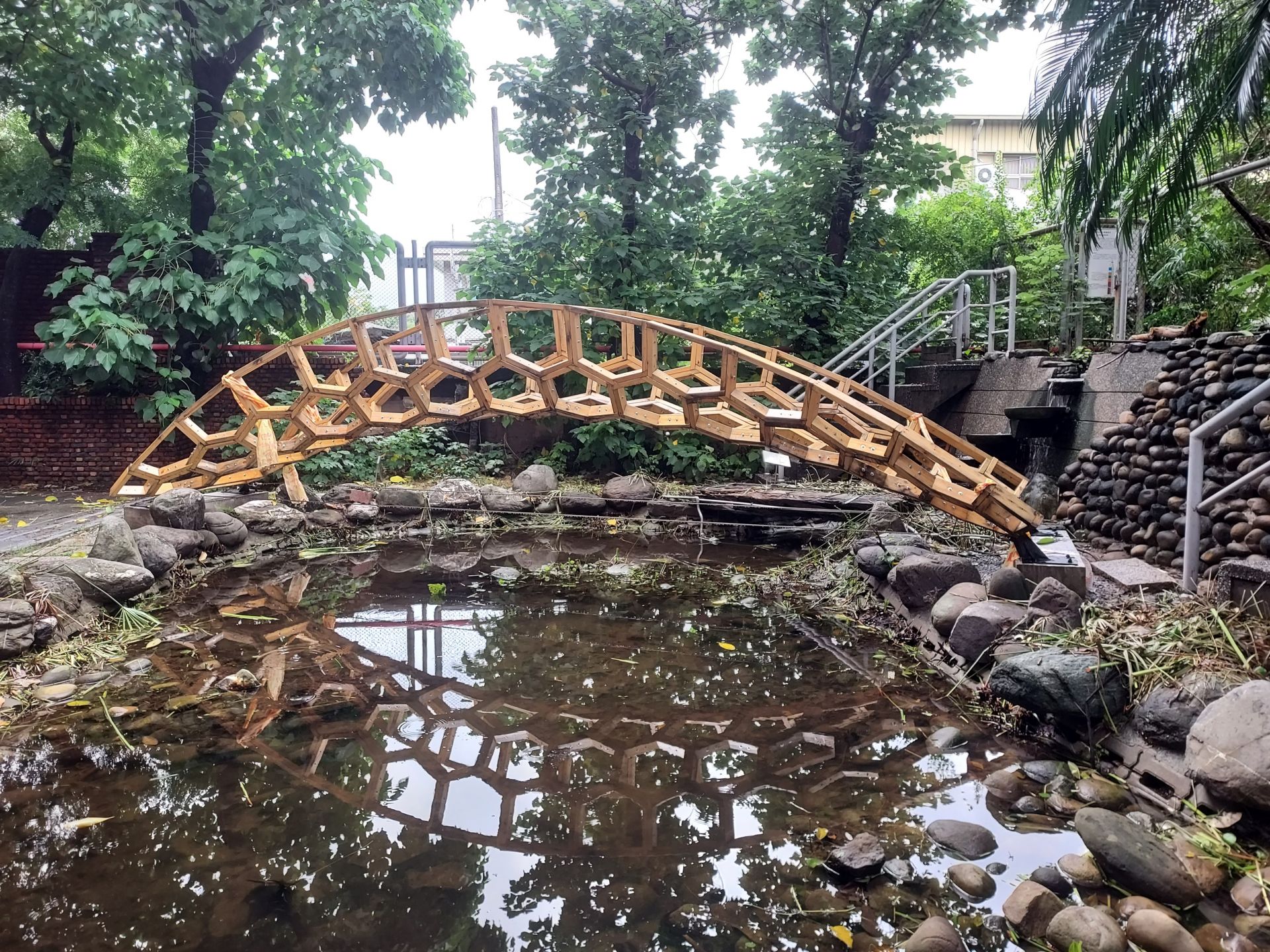
NCKU Mechanical Arm Wooden Artwork 'Veins of Fallen Leaves' Spanning Across the Architecture Department's Ecological Pond

The design team of 'Veins of Fallen Leaves' is also the construction team, and the entire artwork is completed by faculty and students from NCKU's Department of Architecture.

The design and manufacturing process of the arch bridge "Veins of Fallen Leaves"





